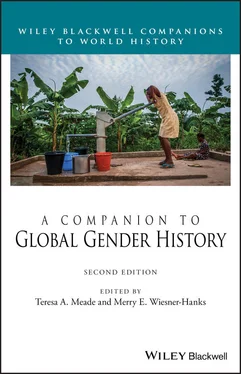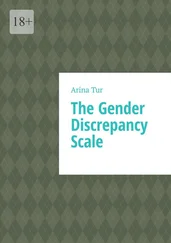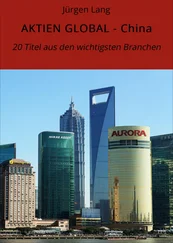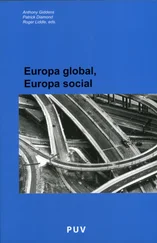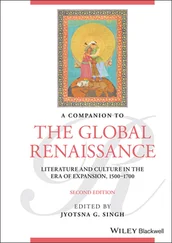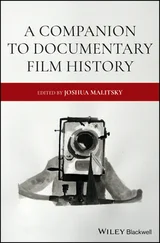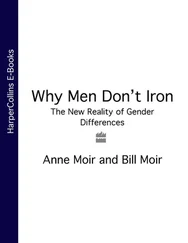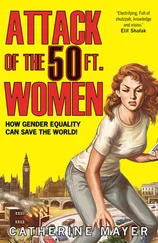1 Cover
2 Title Page A COMPANION TO GLOBAL GENDER HISTORY SECOND EDITION Edited by Teresa A. Meade and Merry E. Wiesner‐Hanks
3 Copyright Page
4 List of Figures
5 About the Editors
6 Contributors
7 Introduction
8 Part I: Thematic Essays on Gender Issues in World History Chapter One: Sexuality BIBLIOGRAPHY AND FURTHER READING Chapter Two: Gender and Labor in World History Early Human Societies and the Emergence of Gender Divisions The Emergence of Complex Societies and Gender Divisions in the Ancient World Militarization, Decentralization, and Gender Divisions in Feudal Societies Merchant Capitalism, Gender Ideology, and Protoindustrialization Industrial Capitalism, and Public and Private Labor Resistance, War, and Revolution, and the State Conclusion BIBLIOGRAPHY AND FURTHER READING Chapter Three: Structures and Meanings in a Gendered Family History Sources for a Gendered Family History Family Structures and Functions Relations within the Family State Intervention in Family Life BIBLIOGRAPHY AND FURTHER READING Chapter Four: The Construction of Gendered Identities in Myth and Ritual Introduction The Terrain and What is at Stake Inscribing Gender in the Flesh: Making the “Female” and “Male” in the Ancient World Circumcision, Identity, and Rites of Passage Circumcision and the Sande and Poro of the Mende of Sierra Leone Maintaining Gender in and through Mythology Gender in Sande and Poro Masks Concluding Comments BIBLIOGRAPHY AND FURTHER READING Chapter Five: Gender Rules: Law and Politics Ancient Patriarchy The Medieval and Early Modern Periods The French Revolution Western Models in a Colonial Setting BIBLIOGRAPHY AND FURTHER READING Chapter Six: Race, Gender, and Other Differences in Feminist Theory Concepts of Race Concepts of Women, Sex, and Gender The Inseparable Nature of Race and Gender More than Analogous: Sexuality, Border Identities, and Disability Located Knowledges: Representation and Positionality Conclusion BIBLIOGRAPHY AND FURTHER READING Chapter Seven: Gender and Material Culture History Introduction: Genders of Things, Things of Genders Women’s History and Material Culture Studies Gender, Material Culture, and Consumption Gender, Material Culture, and Production Conclusion BIBLIOGRAPHY AND FURTHER READING Chapter Eight: How Images Got Their Gender: Masculinity and Femininity in the Visual Arts Women Artists and Gender Analysis Symbolism and Subversion Women, Gender, and the Arts of East Asia Artist, Patron, Image Critical Race Theory and Art Postcolonial and Globalized Art History LGBTQ+ Studies in Art BIBLIOGRAPHY AND FURTHER READING Chapter Nine: Gender, Revolution, and Anti‐Imperialism Revolution Anti‐Imperialism Transnationalism Conclusion BIBLIOGRAPHY AND FURTHER READING Chapter Ten: Feminist Movements Feminist Movements and Feminism Women and Rebellion in Early Modern Europe Nineteenth‐Century Liberal Feminism Socialism and Feminism Anti‐Colonialism, National Independence, and Feminism Feminism in the 1960s and 1970s International Feminism and Intersectionality in the Twenty‐First Century BIBLIOGRAPHY AND FURTHER READING
9 Part II: Chronological and Geographical Essays Early Societies (100,000 BCE–1400 CE) Chapter Eleven: Gender in the Earliest Human Societies Gender in Prehistory (c.40,000–4,000 years BP) Studying Ancient Gender Conclusions BIBLIOGRAPHY AND FURTHER READING Chapter Twelve: Gendered Themes in Early African History Kinship, Motherhood, and Healing in East Africa Masculinity and Marriage in Southern Africa Men’s Work, Women’s Work, and Social Organization in Central Africa Clanship, Households, and Incorporation in Atlantic‐Era West Africa Gendered Themes in Early African History BIBLIOGRAPHY AND FURTHER READING Chapter Thirteen: Women and Gender in Ancient Mediterranean Cultures Religion and Rituals Gender Identities and Sexual Norms Social Restrictions The Life Cycle Women’s Work in the Household and Beyond Governance Warfare Women’s Voices Conclusion BIBLIOGRAPHY AND FURTHER READING Chapter Fourteen: Confucian Complexities: China, Korea, Vietnam, and Japan China Korea Vietnam Japan Summary Reflections BIBLIOGRAPHY AND FURTHER READING Chapter Fifteen: Toward Engendering Early Histories of the Indian Subcontinent: Consolidating Insights and Continuing Challenges Introduction From the Second to the Mid‐First Millennium BCE Early Historic Developments Recognizing Regional Diversities BIBLIOGRAPHY AND FURTHER READING Chapter Sixteen: Gender in the Ancient Americas: From Earliest Villages to European Colonization Village Life Stratified Societies From Stratified Societies to States Future Directions BIBLIOGRAPHY AND FURTHER READING Chapter Seventeen: Medieval Europe Governing Labor Legal Structures Material Culture Conclusions BIBLIOGRAPHY AND FURTHER READING Gender in Early Modern Society (1400–1750) Chapter Eighteen: Gender, Science, and Medicine in the Early Modern World Spaces and Strategies Science Health and Healing Gendered Knowledge Conclusion BIBLIOGRAPHY AND FURTHER READING Chapter Nineteen: Bringing the Gender History of Early Modern Southeast Asia into Global Conversations Gender Roles and Indigenous Ritual Incoming Religious Influence and Changing Gender Regimes Gender and Rural Economics Global Trade and Gendered Influences Class Differences: Court and Village Concluding Remarks BIBLIOGRAPHY AND FURTHER READING Chapter Twenty: Women, Gender, and Sexuality in the Middle East High Culture: Palace Women and Dynastic Politics Elite Households Beyond the Court Middle and Lower Class Women in Provincial Towns and the Countryside Gender, Sexuality, and Poetry Eighteenth‐Century Changes Conclusion BIBLIOGRAPHY AND FURTHER READING Chapter Twenty‐One: Did Gender Have a Renaissance? Reconsidering Categories in Early Modern Western Europe Renaissance Italy Work and Family Protestant and Catholic Reformations Gender, Power, and Politics The Many Women of Early Modern Europe BIBLIOGRAPHY AND FURTHER READING Chapter Twenty‐Two: The Atlantic World Gender and the Imposition of Imperial Control Women, Gender, and the Adaptation and/or Acquiescence to Imperial Control Women, Gender, and Resistance to Empire Conclusion: Empire as a Gendered Category of Analysis BIBLIOGRAPHY AND FURTHER READING Gender in the Modern World (1750–1920) Chapter Twenty‐Three: New Global Imperialism Stages of Empire The “Woman Question” Race, Gender, and Empire Mixed‐Race Families Masculinity, Sexuality, and Empire The “Other” Empire Conclusion BIBLIOGRAPHY AND FURTHER READING Chapter Twenty‐Four: Women’s and Gender History in the Middle East and North Africa, 1750–World War I Property and Power Law and Gender Sexuality Family Life The “New Woman” Women’s Movements and Nationalism Conclusion BIBLIOGRAPHY AND FURTHER READING Chapter Twenty‐Five: Gender, Women, and Power in Africa, 1750–1914 Kinship and Conjugality Slavery and Women’s Work Political Power Wielded by Women Women and Trade: Issues of Autonomy and Agency Gender, Colonial Capitalism, and Initial Colonial Conditions Sexuality, Masculinity, and Control of Women Conclusions Without Closure BIBLIOGRAPHY AND FURTHER READING Chapter Twenty‐Six: Clash of Cultures: Gender and Colonialism in South and Southeast Asia, Australia, and New Zealand South Asia Southeast Asia Australia and New Zealand Conclusion BIBLIOGRAPHY AND FURTHER READING Chapter Twenty‐Seven: From Private to Public Patriarchy: Women, Labor, and the State in East Asia, 1600–1919 Status Inequality and Sex Segregation Crises and Reforms in the Nineteenth Century ACKNOWLEDGMENT BIBLIOGRAPHY AND FURTHER READING Chapter Twenty‐Eight: Gender, Power, and Society in Western Europe, 1750–1914 Introduction Enlightenment and Revolution Domesticity and its Discontents Industrialism and Urbanism Power and Politics Empire, Travel, and Leisure BIBLIOGRAPHY AND FURTHER READING Chapter Twenty‐Nine: Gender in Russia and Eastern Europe, 1750
Читать дальше
